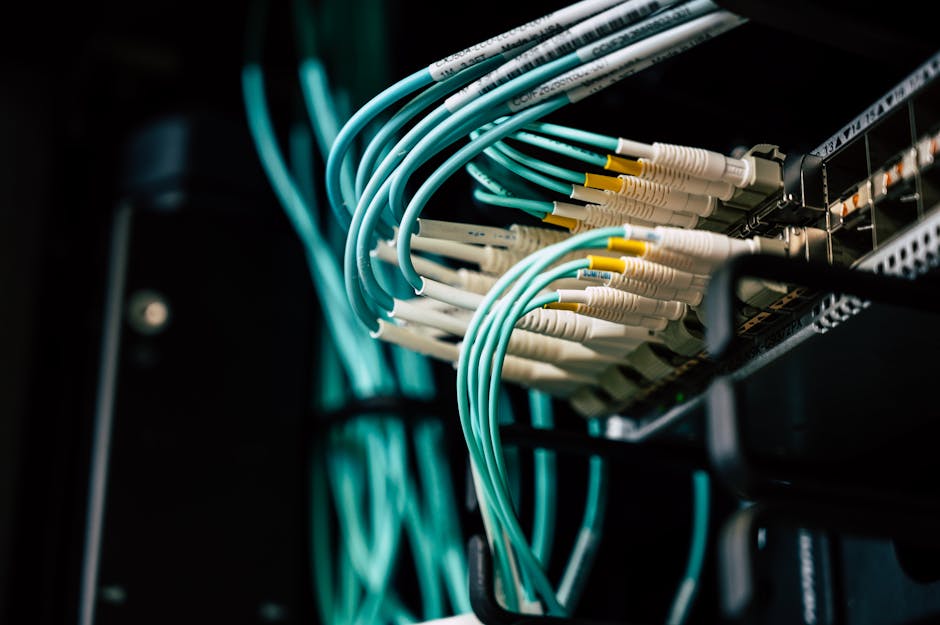Ways to Optimize Ethernet Connections for Speed

Optimizing Ethernet connections for speed involves a combination of hardware upgrades, configuration tweaks, and proper maintenance. Ethernet connections are critical for stable and fast internet access, particularly for tasks requiring high bandwidth, such as online gaming, streaming, and large file transfers. Understanding how to make the most of your Ethernet connection can significantly improve your internet experience.
Choosing the Right Ethernet Cable
The type of Ethernet cable you use can have a significant impact on your connection speed. Ethernet cables come in different categories, each with its own specifications:
- Cat5e: Suitable for speeds up to 1 Gbps and frequencies up to 100 MHz.
- Cat6: Supports speeds up to 10 Gbps over shorter distances (up to 55 meters) and frequencies up to 250 MHz.
- Cat6a: Enhanced version of Cat6, supporting 10 Gbps over longer distances (up to 100 meters) and frequencies up to 500 MHz.
- Cat7: Offers even higher performance with support for speeds up to 10 Gbps and frequencies up to 600 MHz, but is more expensive.
Selecting the appropriate cable based on your network needs is crucial. For most home users, Cat5e or Cat6 cables are sufficient. However, if you require higher speeds for demanding applications, investing in Cat6a or Cat7 cables might be beneficial.
Optimizing Network Hardware
Your network hardware plays a vital role in determining your Ethernet connection speed. Here are some key components to consider:
- Router: Ensure your router supports gigabit Ethernet ports. Older routers with only fast Ethernet ports (100 Mbps) will bottleneck your connection.
- Network Interface Card (NIC): Most modern computers come with built-in gigabit NICs. However, if you're using an older system, consider upgrading to a gigabit NIC.
- Switches: If you're using network switches, make sure they support gigabit speeds. Using outdated switches can slow down your entire network.
Upgrading these components can lead to significant improvements in your network performance. Also, regularly updating the firmware of these devices can help in maintaining optimal performance.
Configuring Network Settings
Tweaking your network settings can further enhance your Ethernet connection speed. Here are some tips:
- Enable Jumbo Frames: If supported by your router and NIC, enabling jumbo frames can reduce CPU load and increase throughput by allowing larger packets of data to be transmitted.
- Adjust QoS Settings: Quality of Service (QoS) settings allow you to prioritize certain types of traffic, ensuring that high-priority applications get the bandwidth they need.
- Disable Energy-Efficient Ethernet (EEE): EEE is designed to save power but can sometimes reduce network performance. Disabling it can provide a speed boost.
Maintaining Your Network
Regular maintenance is essential for keeping your Ethernet connection running at optimal speeds:
- Cable Management: Ensure that your cables are not damaged or kinked, as this can degrade performance. Using cable organizers can help keep things tidy.
- Avoid Interference: Keep Ethernet cables away from electrical cables and devices that may cause interference.
- Regular Updates: Keep your operating system, drivers, and firmware updated to ensure compatibility and optimal performance.
A combination of choosing the right cables, upgrading hardware where necessary, configuring network settings appropriately, and maintaining the infrastructure ensures that you get the best possible speed from your Ethernet connection. Each of these steps plays a crucial role in minimizing latency and maximizing throughput, making for a seamless online experience whether you're working from home or enjoying entertainment activities.
| Category | Max Speed | Max Frequency | Max Distance |
|---|---|---|---|
| Cat5e | 1 Gbps | 100 MHz | 100 meters |
| Cat6 | 10 Gbps (short distances) | 250 MHz | 55 meters |
| Cat6a | 10 Gbps | 500 MHz | 100 meters |
The choice of Ethernet cable type impacts the overall performance of the network significantly. Additionally, proper configuration and regular maintenance are essential aspects that cannot be overlooked when aiming for optimal speed and stability in an Ethernet setup. Following these guidelines ensures that you achieve the highest possible efficiency from your network infrastructure.
Your efforts in optimizing an Ethernet connection contribute directly to a more reliable and faster internet experience. By investing time in understanding and implementing these optimizations, you create a robust network environment that caters efficiently to both everyday needs and more intensive applications.
References: Lifewire: What Is Ethernet?, TechRadar: Best Ethernet Cable in 2023 - Reviews & Buying Guide, NetworkWorld: How to Speed Up Your Ethernet Connection.